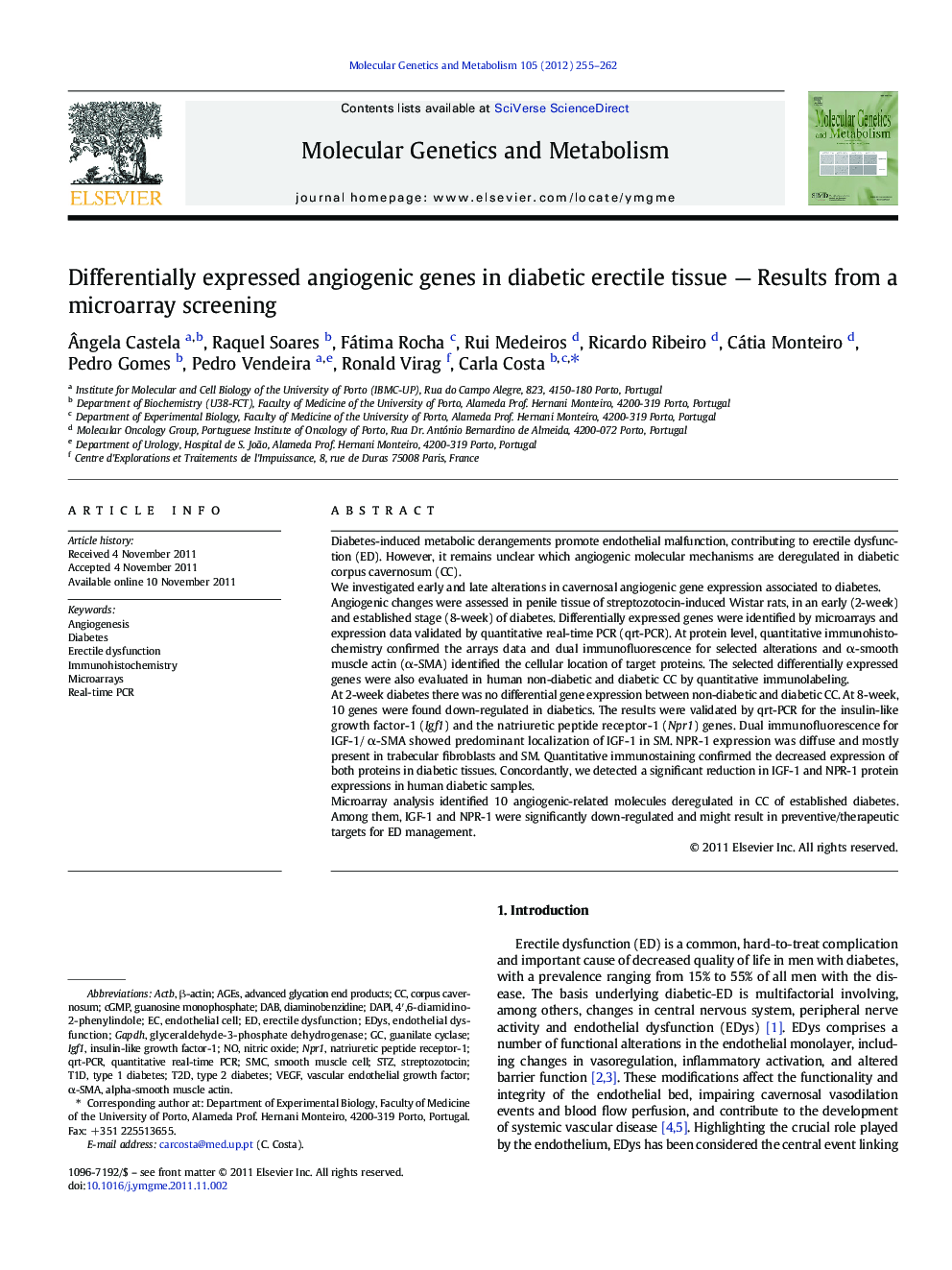| Article ID | Journal | Published Year | Pages | File Type |
|---|---|---|---|---|
| 1998626 | Molecular Genetics and Metabolism | 2012 | 8 Pages |
Diabetes-induced metabolic derangements promote endothelial malfunction, contributing to erectile dysfunction (ED). However, it remains unclear which angiogenic molecular mechanisms are deregulated in diabetic corpus cavernosum (CC).We investigated early and late alterations in cavernosal angiogenic gene expression associated to diabetes.Angiogenic changes were assessed in penile tissue of streptozotocin-induced Wistar rats, in an early (2-week) and established stage (8-week) of diabetes. Differentially expressed genes were identified by microarrays and expression data validated by quantitative real-time PCR (qrt-PCR). At protein level, quantitative immunohistochemistry confirmed the arrays data and dual immunofluorescence for selected alterations and α-smooth muscle actin (α-SMA) identified the cellular location of target proteins. The selected differentially expressed genes were also evaluated in human non-diabetic and diabetic CC by quantitative immunolabeling.At 2-week diabetes there was no differential gene expression between non-diabetic and diabetic CC. At 8-week, 10 genes were found down-regulated in diabetics. The results were validated by qrt-PCR for the insulin-like growth factor-1 (Igf1) and the natriuretic peptide receptor-1 (Npr1) genes. Dual immunofluorescence for IGF-1/ α-SMA showed predominant localization of IGF-1 in SM. NPR-1 expression was diffuse and mostly present in trabecular fibroblasts and SM. Quantitative immunostaining confirmed the decreased expression of both proteins in diabetic tissues. Concordantly, we detected a significant reduction in IGF-1 and NPR-1 protein expressions in human diabetic samples.Microarray analysis identified 10 angiogenic-related molecules deregulated in CC of established diabetes. Among them, IGF-1 and NPR-1 were significantly down-regulated and might result in preventive/therapeutic targets for ED management.
► Microarrays identified 10 genes altered in 8-week diabetic rat cavernosal tissue. ► Qrt-PCR confirmed the significant downexpression of Igf1 and Npr1 in diabetic CC. ► IGF-1 and NPR-1 protein expression levels corroborated arrays and qrt-PCR data. ► Similar IGF-1 and NPR-1 results were obtained in human diabetic corporeal tissue. ► IGF-1/NPR-1 may be potential targets in the prevention/management of diabetic-ED.
